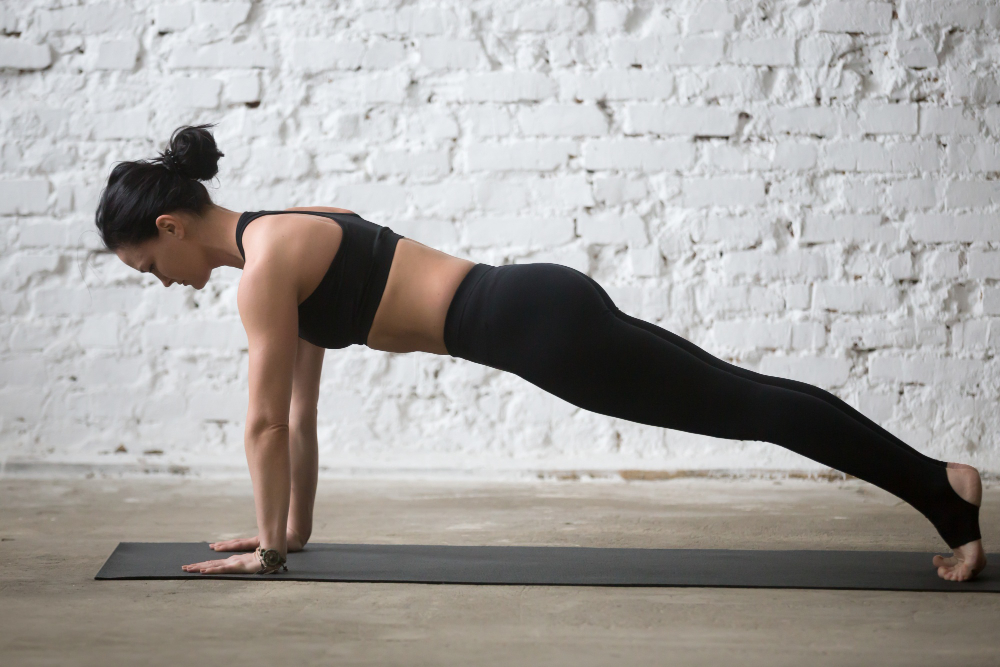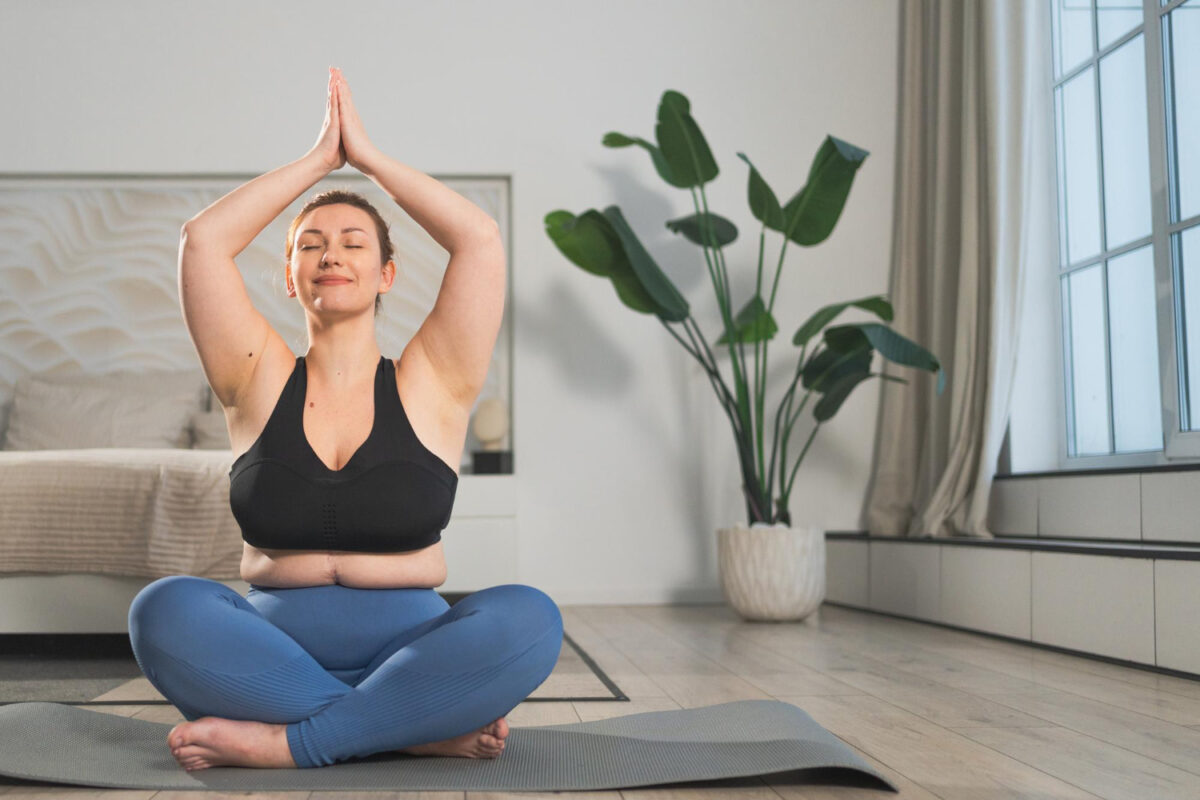Although it is not its purpose, yoga is a restorative and balancing physical activity that helps us compensate for bad habits and combat sedentary lifestyle. Today, since Sincronia Yoga, we explain how strengthen the abdomen with yoga and what are the best asanas to achieve it.
The therapeutic side of yoga
One of the reasons why yoga has become so popular in the West is its aspect more related to the physical body work. Yoga was the first philosophical system where the body to mind. The innovation compared to other philosophical systems was to think that the human body is the vehicle to achieve the meditative state and, with it, deeper states of consciousness.
Upon reaching the West and mixing with the idea of “healthy mind in healthy body”, the asanas Initially designed for energetic activation and meditation, they have mutated into a complete series of exercises to revitalize and condition the entire being.

So we can take advantage of this therapeutic side of yoga, where we take care of our body to slowly enter a state of inner balance which favors meditation and introspection. To sooner or later we find the true path of yoga and calm the fluctuations of the mind.
Strengthen the abdomen with yoga
In yoga there is a physical concept to refer to the abdominal area and its work. We talk about kanda, the center of the body, breathing and movement; the center of vital energy.
In the Kanda area, the nadis either energy channels that move the prana wave vital energy for our body. Furthermore, it is a point where the energy of the second chakra, related to creativity and relationships and with third chakra, related to selfless action.
The abdomen Well, it is a very interesting area for yoga practice and that is worked on throughout the practice without requiring a specific approach. It is about applying constant and indirect work to kanda throughout the yoga practice.
Whether it is a gentle yoga restorative or a intense and dynamic yoga, movements and postures will require respiratory awareness, body awareness and proprioception. And that, yes or yes, will lead us to strengthen the abdomen and all the surrounding structures, in a more or less active way, but always within a complete practice.
The best asanas to strengthen the abdomen with yoga
We can feel this strengthening effect of the center in postures of various groups of asanas, vinyasas and also pranayama, within a balanced practice.
Strength postures
The best yoga asanas to strengthen the abdomen are located in any posture that requires some muscle strength for its execution or to sustain it for several breaths. It is not about doing sit-ups, but rather activating the strength of kanda either bringing the ribs towards the navel or focusing the breath on the abdomen.
Some examples of strength postures for abdominal work they would be:
- Navasana. The boat posture, containment and abdominal strength.
- Caturanga dandasana. The plank position, activation of the entire body muscles.
- Vasistasana. The side plank on the hand, containment and abdominal strength.
- Urdhva dandasana. The posture of legs to the sky, holding and focused breathing.
balance poses
Balance postures are one of the most interesting postures in yoga. The reason is that Its execution requires body, breath and mind. By practicing them our mind focuses on the present moment, the body is activated through micromovements and breathing brings us to balance and center again and again. The abdominal area It is worked without forcing, by collecting it and focusing the breath on it. A very subtle breath that brings us closer to fusion with the present moment.

Some examples of balance postures To strengthen the abdomen they would be:
- Virabhadrasana III. The warrior in balance, presence and containment.
- Utthita ekapadangustasana. Holding one leg forward, strength in quadriceps and psoas, active presence.
- Ardha chandrasana. Crescent sideways opening and activation for stability.
Inverted postures
Inverted postures, both those adapted with blankets and supports, as well as the more demanding ones on the head or on the hands, require a elevated body awareness and activation of our center and with it abdominal strength.
Some examples of inverted postures To strengthen the abdomen they would be:
- Sirsasana. The inverted one on the head and forearms, by activating abdominal strength, takes weight off the cervical spine.
- Sarvangasana. The sail, also by activating abdominal strength, takes weight off the cervical spine.
- Pincha mayurasana. The peacock feather, activation, balance and containment.
Transitions and jumps
Any practice that includes fluid movements from one posture to the other, but even more so those vinyasas or practices that include jumps for transitions, they will strengthen the abdomen and require its activation and strength. Thus the practice of Ashtanga-Yoga either Vinyasa-Yoga, they will be complete practices to strengthen the abdomen.
Pranayama to strengthen the abdomen with yoga
Finally, the conscious breathing practice either pranayama, is another of the work points where you can strengthen the abdomen with yoga. We have already seen that kanda It is also the center of breathing, the point where it is born naturally and spontaneously and the point where focus breathing to activate our strength. Furthermore, certain practices of pranayama They are focused on cleaning the abdominal area, making it more flexible, or awareness of the existence of kanda.
Some examples of pranayama for strengthen the abdomen would:
- Kapalabhathi. Skull cleansing breathing. Abdominal blows to get the air out.
- Bhastrika. The breathing of the bellows. Conscious and intense abdominal movement.
- Practice of uddiyana bandha. The closure of the solar plexus and its movements.
- adhyama pranayama. Low diaphragmatic breathing.
As you have seen, the yoga practice favors a job abdominal area within a complete practice. Although it is not the purpose of yoga, this practice can help us in processes where the recovery of our abdominal strength and with it our power of conscious action.
All I have left to do is invite you to practice with Sincronia Yoga and its great team of professionals who will accompany you in your yoga practice.





